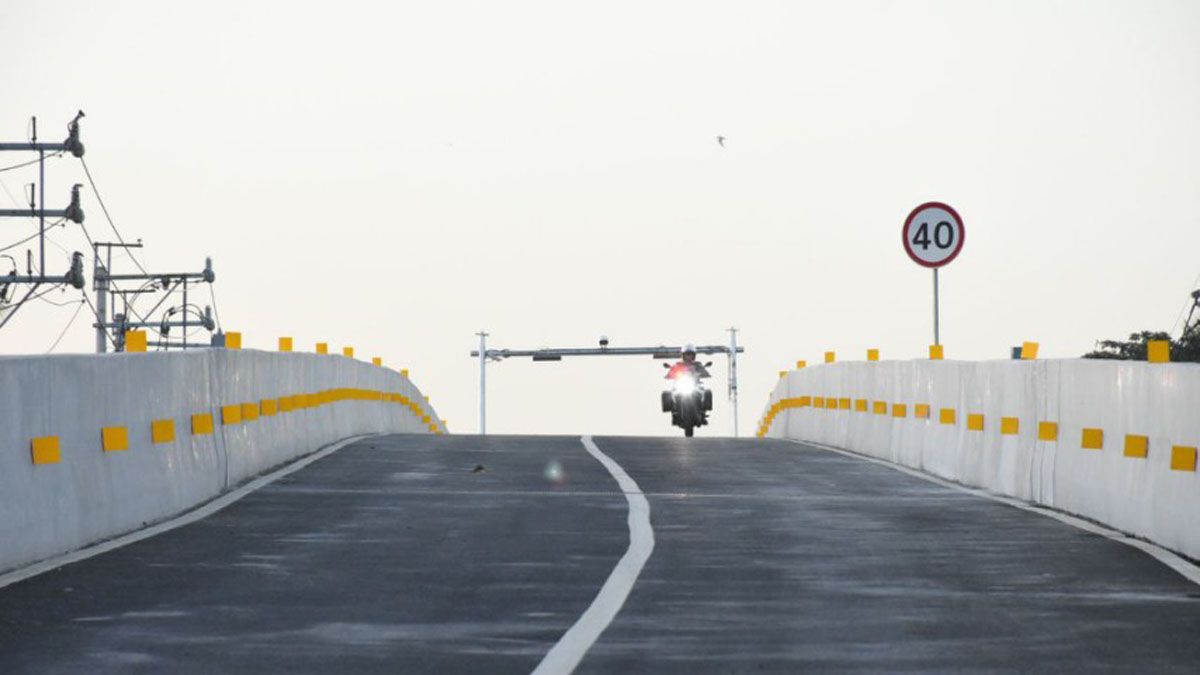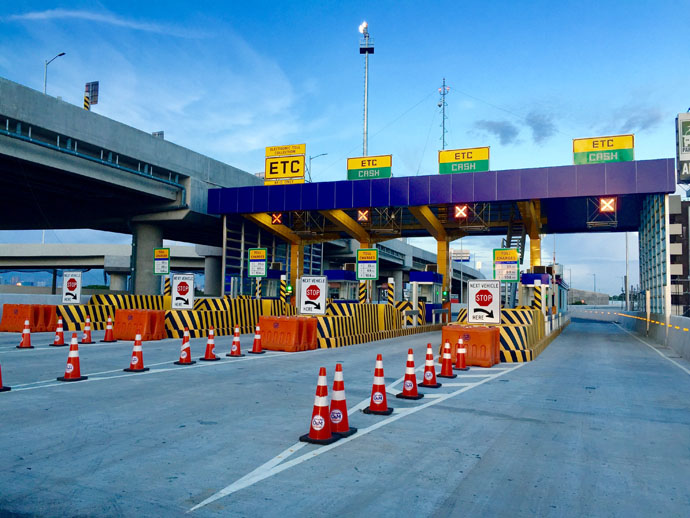SMC: 16% of NAIAX users enter with insufficient RFID load daily
Traffic at tollbooth caused by delinquent drivers
By Inigo Roces

Some 16% of NAIAX users enter the tollway with insufficient load in their RFID accounts, averaging to some 9,600 vehicles daily. This is based on information provided by SMC Infrastructure, operators of NAIAX, during the first week of May 2024. The operator reports this caused traffic buildup on the elevated expressway and continues to be a problem to this day.
This information was shared by no less than SMC President and CEO, Ramon Ang, during a lunch with select members of the automotive press.
NAIAX TOLLBOOTHS (May 1-7, 2024) |
TOTAL TRANSACTIONS | VEHICLES FLAGGED DOWN & COLLECTED (Insufficient load) | % | Daily | |
| Total | Insufficient load | ||||
| NAIA A (Makati bound) | 213,309 | 31,712 | 15 | 30,473 | 4,530 |
| Coastal Road | 70,771 | 12,329 | 17 | 10,110 | 1,761 |
| Terminal 1 | 72,411 | 13,443 | 19 | 10,344 | 1,920 |
| Terminal 2 | 51,799 | 9,666 | 19 | 7,400 | 1,381 |
| Grand Total | 408,290 | 115,785 | 28 | 58,327 | 9,593 |
During the activity, Ang and NAIAX staff shared the many ways they are trying to improve traffic flow on the elevated expressway surrounding the airport. However, it’s the startlingly large amount of drivers with insufficient load in their RFID accounts that continue to be a cause of bottlenecks at the toll booths.
When a vehicle passes through a NAIAX tollbooth and is found with insufficient load, the barrier will not rise to let the vehicle pass. The barrier then has to be manually raised by the teller while the offending vehicle is directed to the side to pay the toll fee. Only after can it be reset for the RFID tag of the next vehicle to be read.
Creatures of (bad) habit

NAIAX staff have also revealed that some motorists have made a habit of repeatedly entering the expressway with insufficient load. Some of these vehicles flagged down had already been pulled aside in the past also for having insufficient funds in their account.
The personnel also shared that a large number of users still do not have RFIDs installed in their vehicles. These drivers argue that they do not use the expressway often and therefore do not see the need to install one. Once they enter, however, they contribute to the long queue in the cash lane, which sometimes obstructs the dedicated RFID lanes.
Finally, the team has also discovered that some Class 3 vehicles have been illegally transferring RFID stickers from registered Class 1 vehicles into their larger Class 2 or 3 vehicles in order to fool the RFID reader into thinking they’re driving a smaller vehicle, and hence pay a lower toll fee.
Cameras watching
NAIAX is able to catch and record all these offenses because each lane in the tollbooth is equipped with a camera that records the vehicle, and is capable of reading its license plate and even conduction sticker if present. These are then cross-checked with information obtained from the RFID sticker and the vehicle registered to it in the database.
The toll operator is then able to build an extensive database of the offenders, particularly when it comes to delinquent payment.
Easy ways to reload
The toll operator hopes that Pinoy drivers can get in the habit of applying for an RFID and ensuring they have enough load before entering the expressway. Autosweep, the RFID system employed by SMC tollways, can be reloaded with funds through its official app for smart phones, which includes a quick-balance check function.
Another way to reload is thru online banking apps of many of the country’s leading banks. It can also be reloaded thru e-wallets like GCash and Maya. They can also be reloaded over the country in convenience stores like Petron Treats, 7-Eleven, Ministop, and Family Mart.
Finally, when passing through the toll booth, keep distance from the car head. Proceed only after the car ahead has cleared the barrier. Drive slowly. This ensures that more accurate RFID sticker detection and deduction. In case there’s an issue, have your RFID account card on hand for manual scanning.